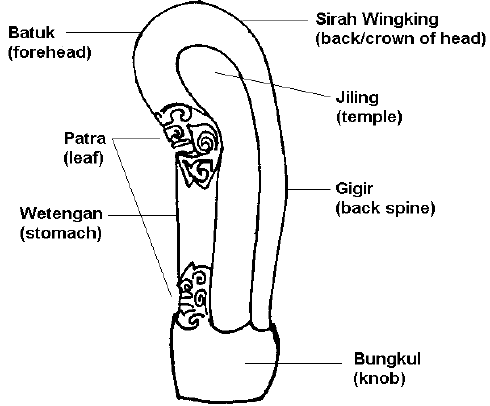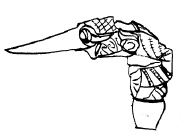| Ukiran
is the term used
in Java for the Keris hilt, in Malay it means "carving".
In the Malay Peninsula, the word Hulu is preferably used.
Keris hilt shapes varies from region to region. It is one of the prominent ways of recognizing the origin of a Keris. However, the Ukiran does not always match the Warangka. For instance a Keris owner might want to combine the magnificence of a Madura Ukiran with the elegance a Surakarta ladrang Warangka. Some collectors value Ukiran more than the keris itself. A special care is taken in making the hilt from selected woods, ivory, horn, precious metal or fossilized teeth. The Ukiran and Warangka craftsman is called a Mranggi, he is an artist with a deep knowledge of traditional symbolism. The engraver is called the Pengukir. |
|
||||||||||||||||||||
|
The generic shape of the Ukiran symbolizes a god in a squat position. To allow the blade cleansing , keris hilts are removable, they are wrapped on the tang with a strip of cloth or string to keep it in place. The following woods are used to make Ukiran :
|
|||||||||||||||||||||
| To color the Ukiran, it is bathed in a mixture of mashed red leaves of pacar (Lawsonia inermiss Lann), then into coconut oil mixed with sambakeling berries (Bixa orellana inn) and finally they are polished. |
|||||||||||||||||||||









